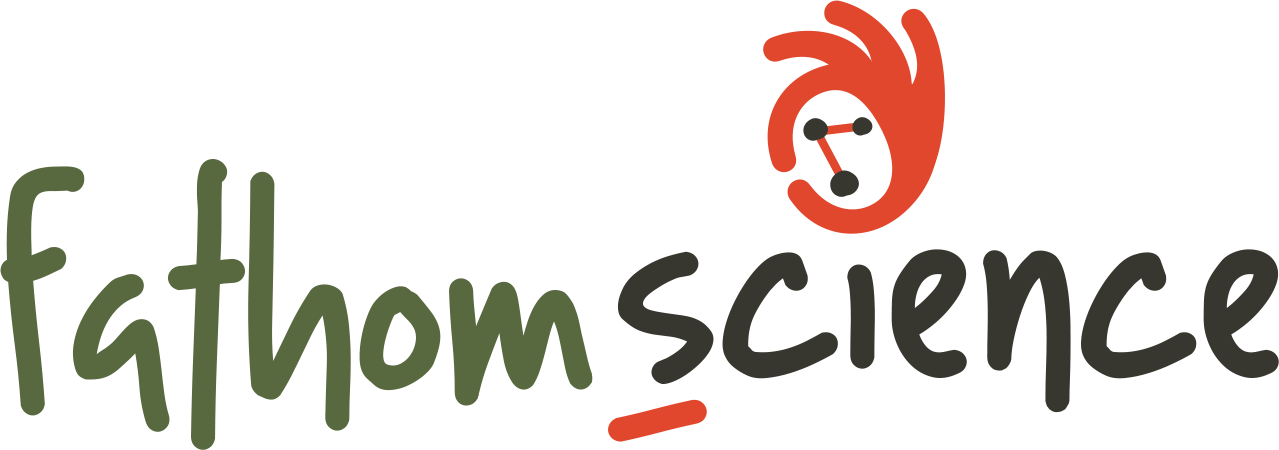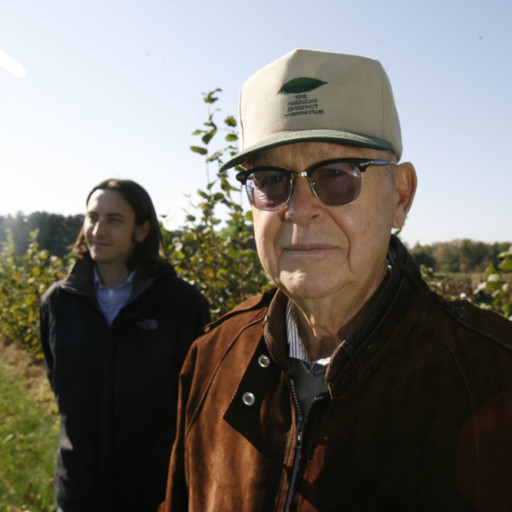The Aids virus is a quick-change artist that copies itself at lighting speed. But a team of scientists at Rutgers believes it can outsmart the killer.
To change the world, Eddy Arnold has always tried to think small.
For nearly 20 years, the Rutgers University chemist has obsessively dismantled the AIDS virus to untangle its deadly submicroscopic machinery.
And it is there, in the complex world of the minuscule, he believes he finally has found a magic bullet that stops AIDS in its tracks.
Arnold and his coterie of researchers have developed what they regard as three revolutionary AIDS drugs, each part of a family they call DAPY (which rhymes with happy). The drugs, they believe, can destroy HIV, the deadly virus that causes AIDS.
To do this, the drugs do as HIV does when it devours immune systems: They change shape. Put another way, DAPYs are a master key that can fit any strand of the virus, regardless of how it tries to disguise itself.
As Arnold says: “We’re onto something very, very special.”
Understanding and controlling this flexibility in a treatment is crucial because HIV’s biggest challenge to science and medicine has been its ability to consistently mutate, outrunning any drug or vaccine custom-designed to quash it. And unlike other treatments that focus on blocking HIV from entering healthy cells or from containing contaminated ones, DAPYs literally douse a lit firecracker by interfering with any of the 20,000 steps HIV takes to copy itself at warp speed.
At the core of this discovery is reverse transcriptase — the villain in this story and a submicroscopic protein not normally found in healthy human cells. The team believes RT is the ideal protein to disable because it offers so many opportunities to be blocked.
The most promising of the three DAPY drugs in the family is a new supercompound known as R278474.
Because DAPYs can be delivered in just one pill instead of the present drug cocktail taken by millions of AIDS patients, Arnold and others believe they are another step closer to the goal of creating a cheaper, more effective way to stay ahead of the epidemic.
So far, tests conducted internally at New Brunswick-based Johnson & Johnson indicate the drug is a snap to synthesize, is easily absorbed with minimal side effects and shows promise as a once-daily, low-dose oral treatment.
For researchers on the front line, R278474 and its cousins may be that magic bullet.
“This could be it,” said Stephen Smith, a physician/scientist who directs the department of infectious disease at Saint Michael’s Medical Center in Newark. “We’re all looking for the next class of drugs.”
Smith manages dozens of clinical trials testing AIDS treatments and said the idea underlying the new RT inhibitors makes sense.
“Reverse transcriptase is very important in the biology of AIDS,” Smith said. “If you can really inhibit reverse transcriptase, you can stop AIDS.”
This is the story of how a team of AIDS researchers remained true to their instincts about reverse transcriptase during nearly 20 years of painstaking research – even when the rest of the scientific world was spinning in another direction.
THE CHALLENGE
It will take an extraordinary remedy to beat AIDS for good. After being held in check for 17 years – first by workhorse medications such as AZT, introduced in 1987, and then by drug cocktails, available since 1996 – the disease now is becoming resistant to long-held treatments.
Worldwide, acquired immune deficiency syndrome has killed 20 million people since appearing in the United States in 1981. And 40 million now live with the disease, according to United Nations statistics.
In New Jersey, more than 32,000 people suffer from AIDS, ranking the state fifth in the country. In the developing world, where many cannot afford even generic versions of AIDS medications, the virus kills people during their most productive years and decimates regions.
It also has been an expensive fight. Government funding for research, prevention and assistance was more than $14.7 billion in 2002.
Arnold thinks he can solve some of these problems.
Known to faculty and students on Rutgers University’s Busch Campus in Piscataway as a sweet-natured scientist, Arnold, 47, studies the structure of biological molecules – the proteins that are the beating heart of the human immunodeficiency virus.
He does this through X-ray crystallography, an increasingly popular technique used in chemistry and biology to determine the structure of molecules – the smallest particles of an element or compound that can exist and still retain all the same characteristics.
Arnold, whom you might find in a shirt and bolo tie one day and a rock ‘n’ roll band’s T-shirt the next, always has enjoyed complex puzzles. Growing up in Pittsburgh he was completing 500-piece jigsaw puzzles at age 3. By 10, he was up to 2,000-piece sets.
Even now, when Arnold sits in his book-lined office deep in the cavernous Center for Advanced Biotechnology and Medicine, he can close his eyes and see thousands of atoms that make up RT.
Reverse transcriptase is composed of two coiled chains of amino acids, the same building blocks found in egg whites, milk, blood and meat. The protein is minuscule; if laid lengthwise on a ruler, you could fit about 2.5 million RTs within one inch.
Though easily mistaken for a tangled piece of confetti, RT is a highly complex machine. Composed of chains containing combinations of 20 amino acids, it is folded in unpredictable ways. Scientists believe there are patterns in these ribbons, but no one has deciphered them.
RT inhibitors interfere with an enzyme that HIV needs to copy itself. If the enzyme fails to function, HIV cannot insert itself into a human host cell and will die.
Compared with HIV’s other proteins, protease and integrase, RT is monstrous and complex, a lethal Rube Goldberg device seeking conquests at high speed. People like Arnold see it as the puzzle to beat all puzzles.
BUILDING THE TEAM
Arnold established his lab at Rutgers in 1987 with his biologist wife, Gail Ferstandig, and set off building what is now a 30-member research team that partners with Janssen Pharmaceutica and Tibotec-Virco NV, both subsidiaries of Johnson & Johnson.
Arnold’s first big move was forming a partnership, also in 1987, with Stephen Hughes, a leading virologist and AIDS researcher at the National Cancer Institute in Frederick, Md.
In 1990, the collaboration added Paul Janssen, a legendary drug pioneer and one of the few scientists who believed in Arnold’s early work. Janssen, according to Arnold, had a dream to devise a drug that could be distributed cheaply in the developing world.
That dream and Arnold’s team ultimately produced R278474 or ripilvirine, Janssen’s favorite anti-AIDS compound and the newest DAPY. The compounds are so named because they have diarylpyrimidine at their core. The other two compounds – dapivirine or TMC-120, and etravirine or TMC-125 – have gone through early phases of clinical trials. Making it through those experiments, something most drugs don’t accomplish, shows the compounds hold great promise to win federal approval.
Details of R278474 will be published early next year in the Journal of Medicinal Chemistry to be dedicated to “Dr. Paul,” as the Belgian physician-scientist, who died in 2003, was known to colleagues. On Nov. 11, Arnold’s team pre-published details in the electronic edition of the Journal of Medicinal Chemistry. The article represents the pinnacle of their work.
R278474 never would have existed without Janssen’s work 14 years earlier.
In 1990, he published a paper in the science journal Nature describing a new drug that blocked HIV’s key protein, reverse transcriptase. Problem was, the compounds caused resistant strains to pop up too quickly, infecting cells with offspring that had tiny mistakes in their genetic code. That meant drugs designed to target a specifically formed virus could fail to recognize and treat mutant strains.
Unable to see this relationship between the drug and the killer virus under a microscope, Janssen needed a scientist to make a crystal that would combine reverse transcriptase with his experimental compound. He was told there were only three people who could do it.
Arnold was one of them.
Together – along with Hughes and other determined colleagues – they embarked on a journey under the banner of modern molecular biology, a discipline defined by DNA co-discoverer Francis Crick as “the attempt to understand any biological problem at the level of atoms and molecules.”
For the next decade, they talked weekly, sometimes daily. First, they would need to understand RT. Then, they could start working on the mysteries of RT inhibitors. Hughes provided RT, Janssen the inhibitors, and Arnold eventually brought it all together with his crystals.
CRYSTAL GAZING
Crystallography, which involves rendering materials into well-ordered crystals and then fathoming their atomic structures, may be as much art as science.
The Picasso that Arnold’s lab was chasing was the crystal structure of reverse transcriptase.
“It took us from 1987 until mid-1991 to get RT crystals that were useful for getting a detailed structure,” Arnold said. “But it took until mid- to late 1992 to solve the detailed structure from these crystals. It was very technically challenging.”
Compounding the tension was a team of researchers at the lab of eminent scientist Thomas Steitz at Yale University, also on the case.
In May 1992, Arnold and his team published a paper showing what amounted to a rough map of the reverse transcriptase molecule.
But the following month, the Steitz team published a paper with greater details, revealing the overall structure of the molecule. The scientific community hailed the paper as a breakthrough.
Undeterred, Arnold’s lab came back in June 1993 with a tour de force. The paper showed not just RT, but the molecule bound with double-stranded DNA – in essence, a snapshot of the protein in action as it co-opts a healthy cell.
“At the time, it filled in a lot of gaps in terms of details of what is where in RT – where drug-resistant mutations are located,” Arnold said.
The paper made the 35-year-old Arnold a star and earned him permanent tenure at Rutgers. It also helped him win funding from the National Institutes of Health and pharmaceutical companies. More funding meant more staff. He was also given more space in his building.
It didn’t make him rich, though, and he will not receive royalties or any other fees if the DAPYs are commercially successful.
He doesn’t like to discuss specifics, but his salary is consistent with that of other top professors at Rutgers – meaning he earns well into the six figures, but far less than the university’s football and basketball coaches.
After the 1993 paper, the Arnold team produced many variant structures of the reverse transcriptase molecule, or new looks at the virus’s mutating dances. It was work that led to the RT inhibitors.
But Arnold’s team didn’t know that at the time. “We were just feeling our way through the science, picking the best, most interesting topics,” he said.
“Arnold was an up-and-coming scientist without tenure,” said Stefan Sarafianos, a molecular biologist who joined Arnold’s lab in 1995. “This was an absolutely crazy thing to do. This was a high-risk project, and he was competing with the super- duper labs of the world like Steitz’s.
“It was a folly. But it turned out all right for him.”
For a while, anyway.
IN AND OUT
In 1996 Arnold suddenly found his research out of step.
The introduction of protease inhibitors, another important class of commercially available AIDS drugs, lowered the profile of RT inhibitors, which attacked the virus during its development.
Protease inhibitors affected the virus in a late stage of its reproductive cycle, meaning the new drugs zapped the virus and already-infected immune cells, slowing the lethal spread from virtual virus factories.
When combined with other drugs in the so-called AIDS cocktails, protease inhibitors are highly effective in extending lives. Their efficacy produced the flawed perception that the disease finally had been beaten. It also nearly killed funding for research on new versions of older drugs.
“When I first heard the results of the protease inhibitors, I thought, ‘Boy, this is really going to change the treatment paradigm,’ ” said Norbert Bischofberger of Gilead Sciences, who has been championing RT inhibitor research since 1989. “Eclipsed would be a good word for what we felt.”
After protease inhibitors were featured at an international AIDS meeting in July 1996 in Vancouver, British Columbia, Wall Street’s enthusiasm for other research flagged.
“Analysts and investors would say to me, ‘We’re done. Right?’ ” Bischofberger said.
But science had tamed the tiger only in places where patients could afford medications.
Bischofberger urged Gilead, his firm, to press ahead.
“In science, this is a long-term effort. Projects can take 10 to 12 years,” he said. “You can’t pay attention to where the wind is blowing at one particular moment. If you believe in something, you just have to keep moving toward your goal.”
Arnold’s team hung on, too.
They knew what they had to do: thwart reverse transcriptase. And they knew they needed a magical crystal, of sorts, to light their way.
THE BREAKTHROUGH
A crystallographer, with just the right mix of chutzpah, luck and intelligence, can believe he has a shot at understanding any living thing.
Even if a molecule is too tiny to see with a microscope, a crystallographer can figure out its shape and composition – what scientists call its structure.
About 2 o’clock one spring night in 2000, Rutgers University physicist-turned-crystallographer Kalyan Das was sitting before a computer monitor in the basement of his Edison townhouse.
He stared at an image of a DAPY drug – TMC-120 – that had been shown in lab studies by scientists at Tibotec Virco. There was a hitch, though: The people who made the compound did not yet understand exactly how it worked.
How is it, Das wondered, that the compound could fit so neatly into the cleft of so many versions of the viral protein, effectively blocking its copying action? To do this, the molecule he was viewing had to wiggle.
Just then, he thought back to his childhood, to the winding caves near a Hindu temple his family attended in India. He remembered how he had to twist and turn to make it back toward the light.
Das then reasoned that the atoms at the extreme end of the compound exhibited “torsional flexibility,” like the movement of a gate swinging on hinges attached to a post. The molecule, he ventured, also had to jiggle, or rock lightly. In short, the compound seemed to be flexible.
Das was excited.
A drug that could wiggle and jiggle – acting like a master key – would be groundbreaking.
The Rutgers group had kicked around the idea of molecular nimbleness for a couple of years and several earlier compounds had shown some degree of bending. But nothing had acted like this. Now it would be the team’s job to use crystallography to figure out exactly how the DAPYs worked.
The battleground would be a tiny room at the Cornell High Energy Synchrotron Source in Ithaca, N.Y., a favorite destination for the Rutgers crystallographers for more than a decade.
CHESS is one of the world’s leading centers for X-ray research in biology and materials science, a 23-year-old facility in Wilson Laboratory under a football field on the vast campus.
The facility’s workhorse is the synchrotron, a massive, ring-shaped machine that actually is the size of the field under which it sits. It accelerates subatomic particles almost to the speed of light, producing synchrotron radiation – a form of light researchers shine on molecules, atoms, crystals and other forms of new materials to understand their structure and behavior.
The radiation gives researchers unparalleled power and precision to probe the fundamentals of matter. The light is a million times brighter than sunlight and a billion times greater than the radiation from a typical lab X-ray.
The emerging beams are just a few thousandths of a millimeter across and are emitted in extremely short pulses, typically 10 to 100 picoseconds (trillionths of a second) in length. The beams barely scrape the precious crystals.
Colleagues often told Das he had a velvet touch with the synchrotron. When others brought dozens of crystals and left without relevant data, Das brought one or two and always got results. That is, until he ran into DAPY.
For more than a year, Das blasted through hundreds of crystals at CHESS and other synchrotrons. Still, he could not obtain useful data.
“We had the crystals and they didn’t diffract,” said Das, meaning samples failed to yield patterns revealing chemical structure. “That was surprising and frustrating. I knew I was doing everything right.”
In October 2002, the Rutgers lab crystal maker, Art Clark, gave Das one crystal for a trip to CHESS. The sample, merely a speck of RT with the TMC-125 inhibitor, was as clear and glittery as a diamond when viewed through a microscope, but it was otherwise unimpressive. With this crystal, however, Clark had extracted some surrounding liquid.
Within a minute of placing the crystal on the beam, Das knew he not only had data, but suspected he also had finally found the key to the puzzle.
Having gone to the Cornell facility by himself, he was alone when the moment came. It was after midnight, but he called Eddy Arnold at home anyway – afraid to be too ecstatic.
“So much had gone wrong in the past, I had trouble believing my own data,” he said.
After a few hours of sleep, Das tried to calm himself during the four-hour drive back to Piscataway, where he went straight to the lab – and to Arnold.
“It’s good,” he said, handing Arnold the images that had been eluding the team for so long.
ONE MORE HURDLE
In fall 2003, after a year of fine-tuning, testing and writing, editors at both Science and Nature rejected Das’ paper on the work, saying it was focused on drug development and not of sufficient general interest. The team took it hard, especially since, as Arnold put it, the work may be “the best thing we’ve ever done.”
With nearly two decades invested, they had little choice but to forge ahead and run experiments to understand what made the DAPY drugs work so well. They also studied the mechanism of resistance in RT – how it occurs, step by step, on a molecular level.
Finally, Das published the results of the team’s work on the DAPY crystal in May 2004 in the Journal of Medicinal Chemistry. By summer, molecular flexibility was the talk of a meeting at the National Institutes of Health. It remains a popular theme among researchers.
Meanwhile, TMC-120 and TMC-125 – the older cousins to the Super DAPY – have shown great promise in Phase I and Phase II trials the past two years.
Smith, the AIDS expert at Saint Michael’s Medical Center, said clinical trials testing safety and effectiveness of TMC-125 are moving apace. He already is enrolling patients for Phase III, the all-important stage in which the federal government assesses patients before approving or rejecting a drug.
Any company embarking on such a multimillion-dollar endeavor is committed to bringing the drug to market, Smith said. Johnson & Johnson officials confirm TMC-120 and TMC-125 are of major interest to them. But they won’t discuss R278474.
In the end, one or more of the DAPY compounds could represent J&J’s first foray into the multibillion-dollar market for AIDS drugs. If TMC-125 moves successfully through its third phase, which would last about two years, it could be approved by the Food and Drug Administration in 2007.
For Arnold – who lives in Belle Mead with his wife, Gail, and their daughters, Lizzie, 14, and Emmie, 10, and pet hedgehog, Thistle – a successful drug will mean he has helped win an important battle.
“We may eventually win the war against HIV/AIDS. That would be an extremely rewarding and satisfying outcome,” he said. “But even to have contributed to helping the health and well-being of the many people infected by HIV will be very satisfying if that were to happen.”
Until then, the clock continues ticking as Arnold and his team work on their latest project, an AIDS vaccine – one of the most difficult-to-achieve scientific goals in history.
“Only the impossible is worth doing,” Arnold said.
Photo by Krystal Ng / Unsplash
Copyright © 2004 The Star-Ledger. All rights reserved. Reprinted with permission.



